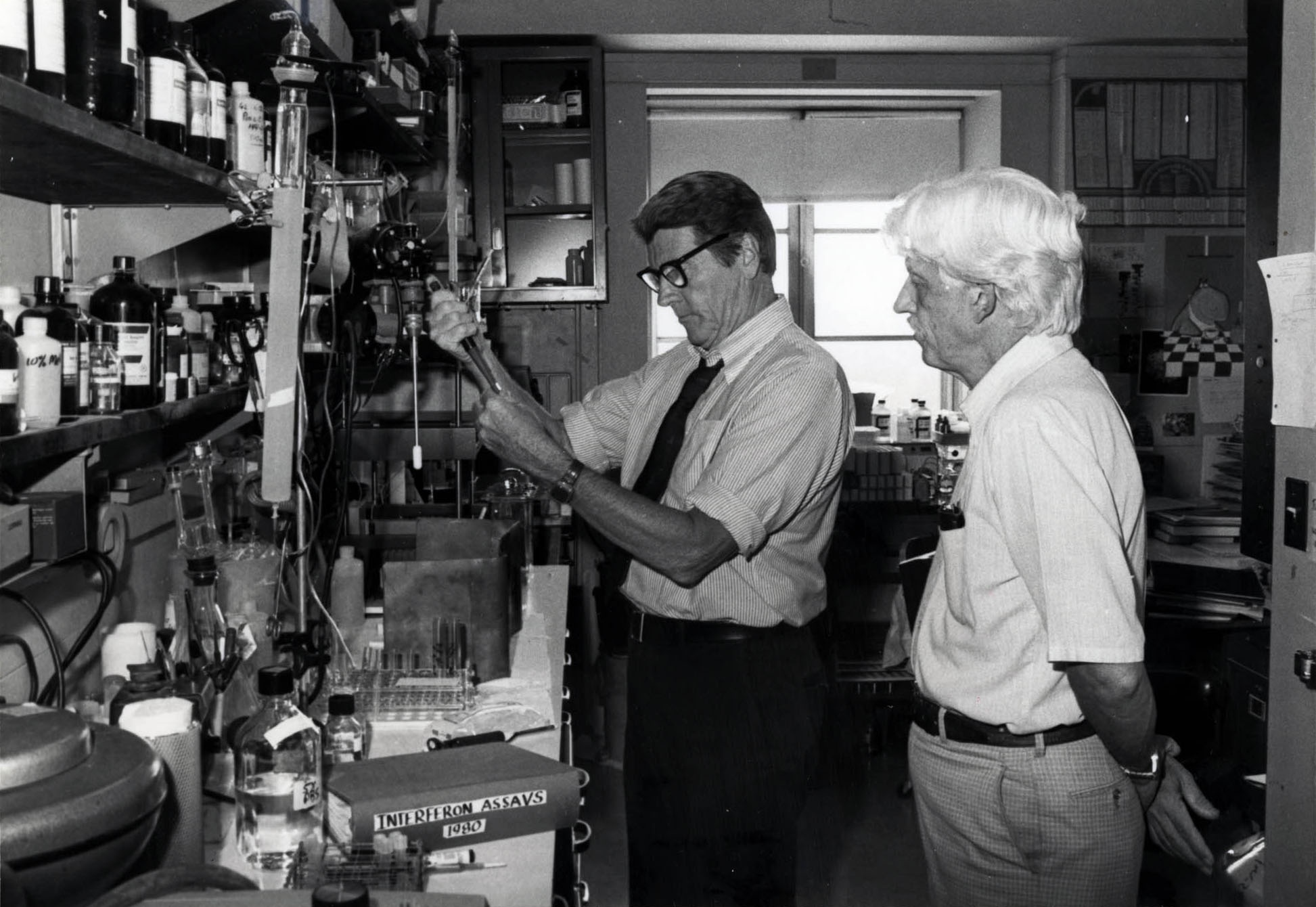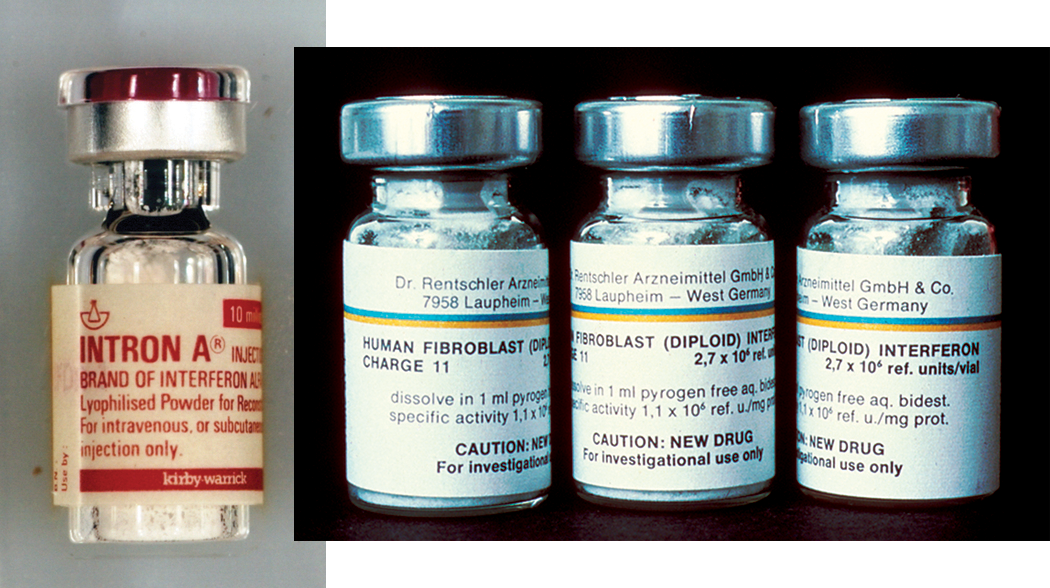Interferon and Molecular Engineering
"Chris is unique because he thinks big. For example, when the rest of the scientific world was talking about how to conduct research with minute quantities of interferon, Chris said, ‘I'll synthesize it.’"
- —Dr. Gilbert Ashwell, NIH Record, July 21, 1981
Interferon: Can a Protein Be a Treatment?
A notebook “Interferon Assays” sits on the laboratory bench while Anfinsen speaks with Joseph “Ed” Rall, the Scientific Director of the National Institute of Arthritis and Metabolic Diseases, who himself was a major positive force on the NIH campus. Rall had recruited Anfinsen as chief of the Laboratory of Chemical Biology.National Library of Medicine
Interferons are a group of proteins that get their name because of what they do: interfere with the replication of viruses. They also help to protect cells from bacterial infections and may inhibit cancer growth. After winning the Nobel Prize, Anfinsen turned to the problem of obtaining enough interferon to study it. In 1974, Anfinsen’s laboratory isolated and purified interferon, enabling them to produce large amounts. By 1979 Anfinsen’s group, among others, had determined the complete sequence of interferon's amino acid structure. Interferon is now used to treat hepatitis C, multiple sclerosis, leukemia, and some cancers.
Bottle of Human Leukocyte Interferon (left). Human Fibroblast (Diploid) Interferon Vials (right). Sample courtesy of the U.S. Food and Drug Administration. Photos courtesy of NCI. Photos by Linda Bartlett.



